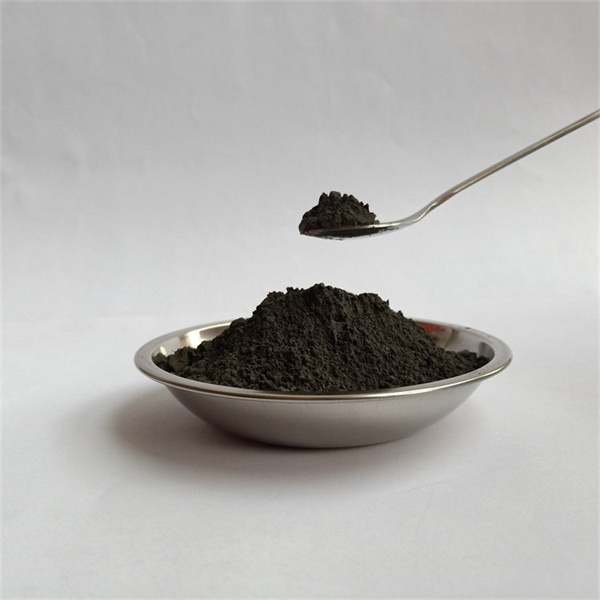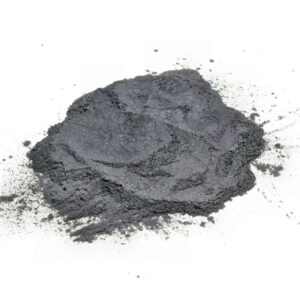IN738LC ist eine wichtige Superlegierung auf Ni-Basis, die häufig zur Herstellung von Heißteilkomponenten in Gasturbinentriebwerken verwendet wird. Sie hat hervorragende mechanische Eigenschaften bei hohen Temperaturen und lässt sich gut verarbeiten.
Dieser Leitfaden bietet einen detaillierten Überblick über IN738LC, einschließlich seiner Zusammensetzung, Eigenschaften, Verarbeitung, Anwendungen, Vorteile, Einschränkungen, Lieferanten und Vergleiche mit anderen Superlegierungen.
Einführung in IN738LC Superlegierung
IN738LC ist eine ausscheidungshärtbare Superlegierung auf Nickelbasis mit den folgenden Haupteigenschaften:
- Ausgezeichnete Hochtemperaturfestigkeit und Kriechfestigkeit
- Gute Beständigkeit gegen thermische Ermüdung und Oxidation
- Behält seine Eigenschaften bis zu ~1100°C bei
- Auf Verarbeitbarkeit optimierte Zusammensetzung
- Vielseitige Anwendungen in Gasturbinen
- Erhältlich als Bleche, Platten, Stangen und Schmiedeteile
- Kann mit geeigneten Techniken geschweißt werden
Dank seiner ausgewogenen Eigenschaften eignet sich IN738LC für eine breite Palette von Gasturbinenkomponenten, die unter anspruchsvollen Bedingungen betrieben werden.

Chemische Zusammensetzung von IN738LC
Die nominale chemische Zusammensetzung von IN738LC ist:
IN738LC Chemische Zusammensetzung
| Element | Gewicht % |
|---|---|
| Nickel | Bal. |
| Chrom | 16.0 |
| Kobalt | 8.5 |
| Aluminium | 3.4 |
| Titan | 3.4 |
| Tantal | 1.7 |
| Kohlenstoff | 0.11 |
| Bor | 0.001 |
- Nickel bildet die Matrix und verbessert die Duktilität
- Chrom für Heißkorrosion und Oxidationsbeständigkeit
- Feuerfeste Elemente wie Ta, Ti, W zur Verstärkung
- Kohlenstoff/Bor zur Verstärkung der Korngrenzen
- Optimierte Zusammensetzung für Schweißbarkeit
Das ausgewogene Legierungsdesign bietet eine Kombination aus Hochtemperaturfestigkeit, Duktilität und Verarbeitbarkeit.
Physikalische und mechanische Eigenschaften von IN738LC
Physikalische Eigenschaften
- Dichte: 8,19 g/cm3
- Schmelzbereich: 1315-1370°C
- Wärmeleitfähigkeit: 11 W/m-K
- Elastizitätsmodul: 205 GPa
- Elektrischer Widerstand: 125 μΩ-cm
Mechanische Eigenschaften bei Raumtemperatur
- Zugfestigkeit: 1035 MPa
- 0,2% Streckgrenze: 965 MPa
- Dehnung: 22%
- Ermüdungsfestigkeit: 590 MPa
Mechanische Eigenschaften bei hohen Temperaturen
- Zugfestigkeit:
- 750 MPa bei 704°C
- 255 MPa bei 982°C
- Berstfestigkeit:
- 240 MPa bei 760°C (100 Stunden)
- 170 MPa bei 982°C (100 Stunden)
Aufgrund dieser Eigenschaften eignet es sich für einen Langzeitbetrieb bis zu ~9500C mit entsprechenden Gestaltungsspielräumen.
Hauptanwendungen der Superlegierung IN738LC
IN738LC findet Anwendung in:
- Teile für den Heißteil von Gasturbinen:
- Brennerauskleidungen
- Übergangskanäle
- Turbinen-Düsen
- Turbinenschaufeln und -leitschaufeln der Stufen 1 und 2
- Brennkammern von Raketentriebwerken
- Vorrichtungen für die Wärmebehandlung
- Nukleare Brennstäbe
- Komponenten für die chemische Prozessindustrie
Seine Vielseitigkeit macht es für verschiedene kritische Hochtemperaturanwendungen in anspruchsvollen Umgebungen nützlich.
Herstellung und Verarbeitung von IN738LC
Zu den wichtigen Aspekten der Herstellung von IN738LC gehören:
Schmelzen
- Vakuum-Induktionsschmelzen und Vakuum-Lichtbogen-Umschmelzen
- Gewährleistet chemische Homogenität
Bildung von
- Warmarbeit über 1150°C
- Kaltbearbeitung von Blechen und Folien
Wärmebehandlung
- Lösungsbehandlung - 1120°C, schnell gekühlt
- Ausscheidungshärtung - 845°C, 24 Stunden, luftgekühlt
Beitritt
- Elektronenstrahl- und Vakuumlöten
- Schmelzschweißen mit passenden Zusatzwerkstoffen
Beschichtungen
- Diffusionsaluminid- und Auflageschichten
- Wärmedämmschichten
Die Kontrolle des Schmelzens, der Warmumformung, der Wärmebehandlung, des Fügens und der Beschichtungen ist entscheidend, um optimale Eigenschaften zu erzielen.
Warum die Superlegierung IN738LC?
Einige wichtige Vorteile des IN738LC:
- Ausgezeichnete mechanische Eigenschaften bei hohen Temperaturen
- Behält seine Festigkeit und Kriechbeständigkeit bis zu ~1100°C
- Gute Beständigkeit gegen thermische Ermüdung und Oxidation
- Bessere Verarbeitungsflexibilität als andere Ni-Superlegierungen
- Kann für die Herstellung komplexer Teile schmelzgeschweißt werden
- Erhältlich als Bleche, Platten, Stangen und Schmiedestücke
- Kostengünstig im Vergleich zu modernen Legierungen
- Bewährte Verarbeitungsmethoden und verfügbare Daten
- Zugelassen für kritische Motorkomponenten
Die ausgewogenen Eigenschaften und die Verarbeitbarkeit von IN738LC machen es zu einer idealen Wahl für viele Gasturbinen-Heißteilkomponenten.
Beschränkungen bei der Verwendung der Superlegierung IN738LC
Bei der Verwendung des IN738LC sind einige Einschränkungen zu beachten:
- Geringere Hochtemperaturfestigkeit als die neuesten Einkristall-Legierungen
- Nicht geeignet für Turbinenteile mit sehr hohen Temperaturen
- Anfällig für Dehnungsrissbildung während der Umformung
- Erfordert eine sorgfältig kontrollierte Wärmebehandlung
- Geringere Oxidationsbeständigkeit als Nb-haltige Legierungen
- Nicht so gut schweißbar wie IN718
- Umformung kann Eigenspannungen hervorrufen
Der IN738LC ist möglicherweise nicht für sehr anspruchsvolle Umgebungen geeignet. Die richtige Konstruktion und Verarbeitung ist der Schlüssel zur Abmilderung von Einschränkungen.
IN738LC Lieferanten von Superlegierungen
Einige führende Anbieter von IN738LC-Legierungen sind:
- Gesellschaft für Spezialmetalle
- Allegheny-Technologien
- Haynes International
- Tischlertechnik
- Sandvik Werkstofftechnik
- Precision Castparts Corp.
IN738LC ist erhältlich als:
- Blatt / Platte
- Bar
- Schmiedevorrat
- Draht
- Schweißzusatzwerkstoffe
Es werden verschiedene Produktformen angeboten, die den unterschiedlichen Anforderungen an die Herstellung entsprechen.
IN738LC Superlegierung Kosten
IN738LC Kostenindikatoren
- Blatt: $90-110/kg
- Bar: $100-120/kg
- Schmiedevorrat: $110-130/kg
- Die Kosten hängen von der Größe, der Menge, dem Lieferanten und den Rohmaterialkosten ab.
- 10-15% ist im Allgemeinen wirtschaftlicher als moderne Ni-Legierungen
- Erfordert hochreine Rohstoffe, die die Kosten erhöhen
IN738LC bietet kostengünstige Leistung für viele Gasturbinenanwendungen. Langfristige Verträge können stabile Preise sichern.
Vergleich von IN738LC mit alternativen Superlegierungen
Vergleich mit IN718
- IN738LC hat eine höhere Temperaturbeständigkeit
- Bessere Kriech- und thermische Ermüdungseigenschaften
- Geringere Umformungsprobleme als bei IN718
- IN718 bietet bessere Schweißbarkeit
Vergleich mit IN713C
- IN738LC hat eine höhere Zug- und Kriechfestigkeit
- Verbesserte Phasenstabilität
- Niedrigerer Ausdehnungskoeffizient als IN713C
- IN713C bietet bessere Verarbeitbarkeit
Vergleich mit zeitgenössischen Ni-Legierungen
- Moderne Legierungen wie Renes N5, CMSX-4 bieten eine höhere Temperaturbeständigkeit
- Allerdings sind sie auch schlechter verarbeitbar und kosten mehr.
- IN738LC bietet eine kostengünstige Kombination von Eigenschaften

FAQs
F: Was sind die Hauptanwendungen der Legierung IN738LC?
A: Hauptanwendungsgebiete sind Teile des heißen Teils von Gasturbinen wie Brennkammern, Übergangskanäle, Düsen, Turbinenschaufeln und -blätter. Es wird auch in Raketentriebwerken und Kernbrennstäben verwendet.
F: Was sind die wichtigsten Eigenschaften des IN738LC?
A: Es hat ausgezeichnete mechanische Eigenschaften bei hohen Temperaturen bis zu 1100°C, gute Ermüdungs- und Oxidationsbeständigkeit, hohe Festigkeit und bessere Verarbeitbarkeit als andere Ni-Superlegierungen.
F: Welche Wärmebehandlung wird für IN738LC verwendet?
A: Lösungsbehandlung bei 1120°C, gefolgt von Ausscheidungshärtung bei 845°C/24 Stunden. Eine kontrollierte Wärmebehandlung ist entscheidend, um die gewünschten Eigenschaften zu erreichen.
F: Wie wird IN738LC geschweißt?
A: Elektronenstrahl- und Vakuumlöten sind gängige Verfahren. Schmelzschweißen kann auch unter Verwendung passender Zusatzwerkstoffe und sorgfältig kontrollierter Verfahren durchgeführt werden.
F: Welche Alternativen gibt es zum IN738LC?
A: Zu den Alternativen gehören IN718, IN713C und fortschrittliche Ni-Legierungen wie Renes N5, CMSX. Jede hat relative Vor- und Nachteile gegenüber IN738LC.
F: Braucht IN738LC Beschichtungen?
A: Es können Diffusionsaluminid- oder Auflageschichten verwendet werden. Wärmedämmschichten sind für Turbinenkomponenten von Vorteil. Beschichtungen verbessern die Oxidations- und Korrosionsbeständigkeit.
F: Welche Vorsichtsmaßnahmen sind bei der Bearbeitung von IN738LC erforderlich?
A: Es erfordert hohe Schnittgeschwindigkeiten mit scharfen Werkzeugen, um Kaltverfestigungseffekte zu vermeiden. Reichlich Kühlmittel ist unerlässlich. Die Bearbeitung kann Eigenspannungen hervorrufen, die eine Wärmebehandlung erfordern.
F: Wo wird IN738LC in Gasturbinentriebwerken eingesetzt?
A: Es wird häufig für Verbrennungsauskleidungen, Übergangskanäle, Düsen, Turbinenschaufeln der Stufen 1 und 2 und Schaufeln in den heißen Bereichen verwendet.
F: In welchen Formen ist das IN738LC erhältlich?
A: Zu den üblichen Produktformen gehören Bleche, Platten, Stangen, Schmiedestücke und Draht. Je nach Bedarf werden verschiedene Formen für die Herstellung von Warmschnittkomponenten verwendet.



